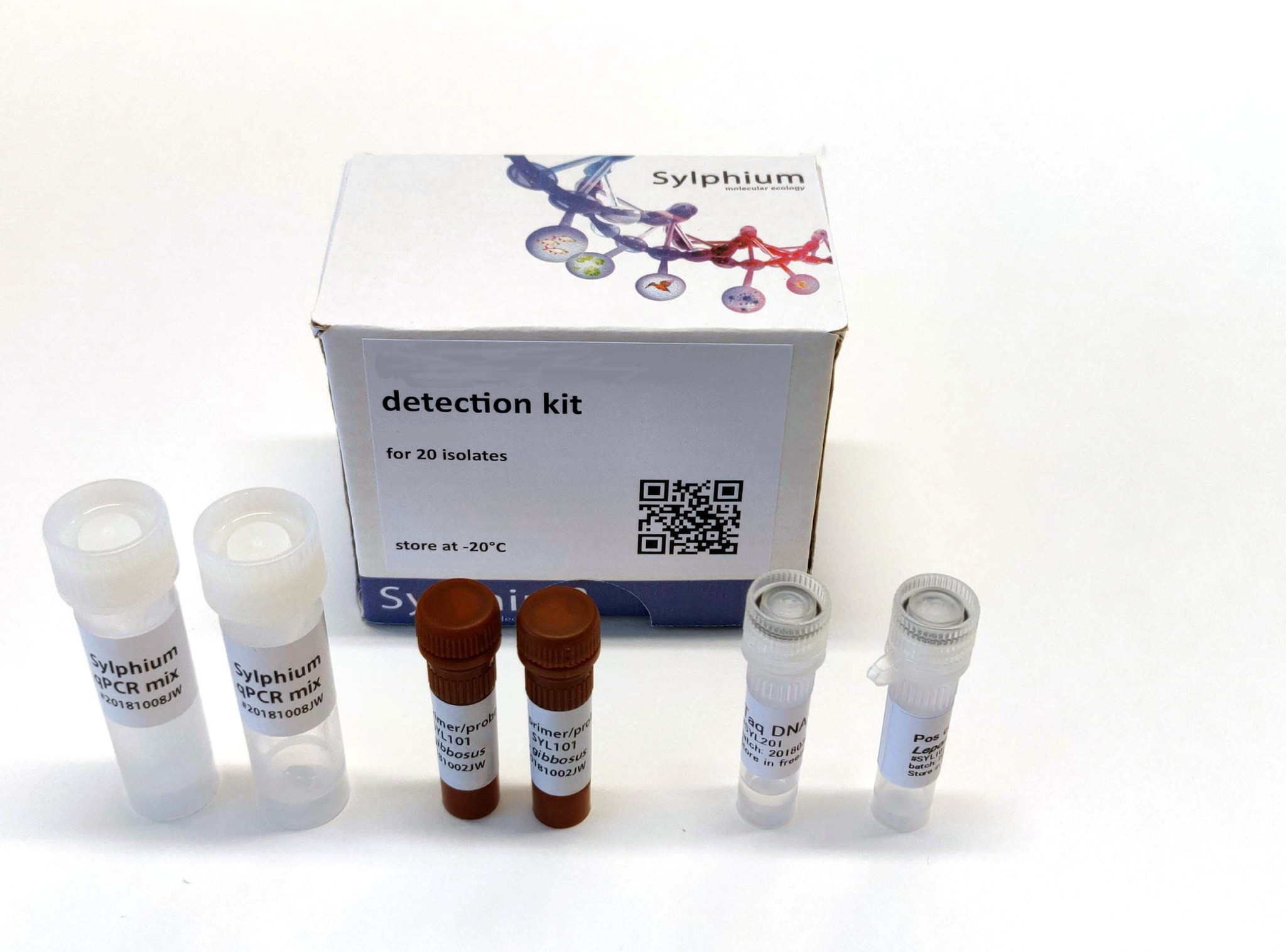The Trichobilharzia sp. (swimmers itch) eDNA detection kit is able to detect the flatworm family Trichobilharzia sp. in all waters worldwide and contains enough materials for 20 samples to be analysed in 8 fold (200 qPCR tests). The kit is based on the fast, sensitive, and proven primers/probe qPCR technique. The kit contains primers and a probe for detecting a highly specific sequence present on the mitochondrial DNA of Trichobilharzia sp.
Species information
Trichobilharzia sp. are neuropathogenic parasitic flatworms of birds which also causes cercarial dermatitis in humans.
The life cycle of Trichobilharzia sp. is analogous to that of human schistosomes. Adult flukes mate in a nasal mucosa of anatid birds (e.g. Anas platyrhynchos, Spatula clypeata or Cairina moschata) and produce eggs with miracidia which hatch directly in the host tissue and leak outside when the bird is drinking/feeding. Once in water, the miracidia swim using their cilia and actively search for a proper molluscan intermediate host (Radix lagotis, Radix labiata, Radix peregra). In the snail, the miracidia develop into a primary sporocyst in which secondary sporocysts are formed and give rise to cercariae later on.
Cercariae, infective larvae, exit the snail and penetrate the skin of an avian host. After penetration of the host’s skin, they shed the immunogenic surface glycocalyx and transform to schistosomula (subadult stage, sg. schistosomulum). Schistosomula then look for peripheral nerves to use them to get to the spinal cord. Through it they continue their migration to the brain and, finally, the nasal tissue in a bill. Here, they mature, copulate and lay eggs while causing pathology (inflammatory infiltration, haemorrhages).
If mammals are infected by cercariae (instead of birds), the parasites die in the skin being entrapped by immune response. The clinical manifestation of such infection is known as an neglected allergic disease called cercarial dermatitis (or swimmer’s itch). In mice, especially in immunodeficient ones, migration of the parasite to the spinal cord was observed.
In English: Swimmer’s itch or cercarial dermatitis
In German: Badedermatitis, Zerkarien-Dermatitis or Schistosomatiden-Dermatitis
In French: Puce de canard, dermatite cercarienne, dermatite du nageur, dermatite du baigneur or poux de canard
In Dutch: Zwemmersjeuk
Primer design
The primers and probe are specially designed to be used with eDNA samples and have the following properties:
- Highest possible sensitivity (<10 DNA copies per reaction). Environmental water samples contain normally very low amounts of target DNA.
- Strong fluorescence signal with low background noise. Isolated environmental samples contain residues of naturally occurring auto fluoresce substances that will interfere with the measurements. A strong fluorescence signal from the analyses is required for these kind of samples.
- 100% specificity. Isolated DNA from environmental samples contains billions of DNA fragments from bacteria, protozoa, plants, animals, etc. Not only animals from the same order (fish) must be taken in account during primer/probe design, but all known DNA sequences must be checked for nonspecific binding of the primers and probe. This is validated by experimental and bioinformatical studies.
The kit is developed and optimized to be used on eDNA isolates purified using the eDNA isolation kit (#SYL002) from Sylphium molecular ecology.
Kit contents
The kit contains materials for an 8 fold analyses on 20 samples including all necessary controls.
- Positive control (Trichobilharzia sp. DNA)
- 2x Sylphium qPCR mix (100 reactions) without primers and probes
- 2x Primer/probe mix (100 reactions) for detection of Trichobilharzia sp.(FAM dye)
- 1x Taq DNA polymerase (200 reactions)
- Protocol and primer/probe validation report
Manual














